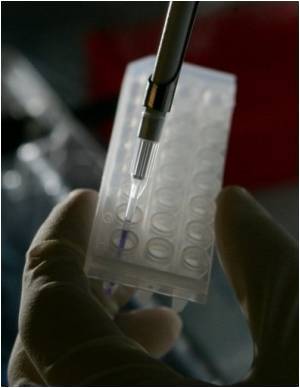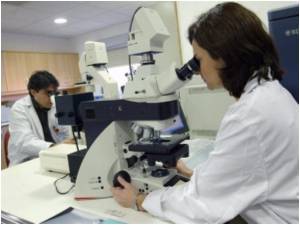An antibody loaded with an anti-cancer agent produced complete or partial remissions in 38 percent of patients with relapsed or therapy-resistant Hodgkin lymphoma enrolled in a phase

"There hasn''t been a new drug considered for Hodgkin lymphoma in 30 years," Younes said. "The potential impact on years of life saved is huge because the median age for this disease is only 32."
Phase I trials are mainly designed to find a maximum tolerated dose for an investigational therapy and to determine the type and severity of side effects that may accompany a drug. They enroll patients who have received standard treatments and have no other therapeutic options.
Brentuximab vedotin (SGN-35), the drug used in the clinical trial, consists of an antibody that targets the CD30 cell surface protein attached to a drug that blocks a class of proteins crucial to cell division. CD30 is expressed on Hodgkin lymphoma and anaplastic large-cell lymphoma (ALCL) cells, Younes said, with normal expression limited to about 1 percent of T cells and other immune system components.
A total of 45 patients enrolled, 42 with Hodgkin lymphoma, two with ALCL and one with angioimmunoblastic T-cell lymphoma. They had undergone a median of three previous chemotherapy regimens and 73 percent had received blood stem cell transplants.
The investigators determined a maximum-tolerated intravenous dose of 1.8 mg per kilogram of body weight every three weeks. Side effects at that dose were primarily at lower grades, including fever, diarrhea, nausea, low white blood cell counts and peripheral neuropathy - nerve pain and/or numbness.
Advertisement
- 17 objective responses (38 percent), 11 of which (25 percent) were complete remissions, defined as disappearance of all evidence of the disease. A partial response consists of a 50 percent decline in the cumulative diameters of known malignant lesions and no new lesions.
Advertisement
- CT scans showed that 36 of 42 (86 percent) evaluable patients had their tumors shrink.
- 19 patients (43 percent) had stable disease.
- Of 16 patients who had disease symptoms at baseline, 13 (81 percent) had their symptoms resolved during treatment regardless of their response status.
An independent, retrospective assessment of CT and positron-emission tomography scans showed similar responses - 18 of 45 objective responses (40 percent) overall and 8 of 12 objective responses (67 percent) among those who received the maximum tolerated dose.
Median duration of objective response was 9.7 months, with median progression-free survival of 5.9 months.
About 80 percent of all Hodgkin lymphoma patients achieve long-term remission with standard chemotherapy regimens which may also include radiation therapy, Younes said. For those who are not cured with front line therapy, especially those whose disease relapses after autologous stem cell transplantation, the prognosis remains poor. About 1,300 people in the United States die from the disease annually.
An earlier clinical trial had shown that the CD30 antibody alone produced no objective responses among 38 Hodgkin lymphoma patients. Seattle Genetics developed the investigational drug brentuximab vendotin by linking monomethyl auristatin (MMAE) to the antibody to form a conjugate. MMAE inhibits tubulin, a family of proteins crucial to the formation of microtubules, which in turn provide structure to cells and are necessary for cell division.
"First generation antibodies were weak, now we have an opportunity to improve upon the naked antibody with conjugates, which deliver toxic chemicals to the tumor cells while largely sparing normal cells," Younes said.
Hodgkin lymphoma is unique among cancers, Younes explained, because cancer cells make up only 5 percent of the tumor, with a variety of inflamed cells composing the remaining 95 percent. "This is the first scientific evidence that if you eliminate a few cancer cells, the entire tumor can be degraded. Eliminate the 5 percent and the rest goes away," Younes said.
Hodgkin lymphoma begins in the lymphocytes, one of the white blood cell types, spreads to the lymph nodes and ultimately invades other organs.
Source-Newswise










